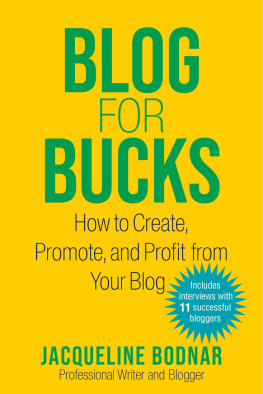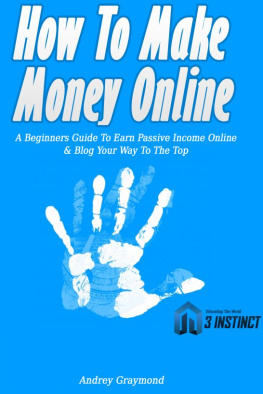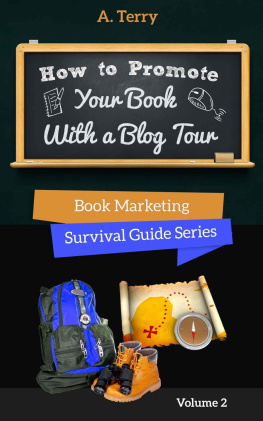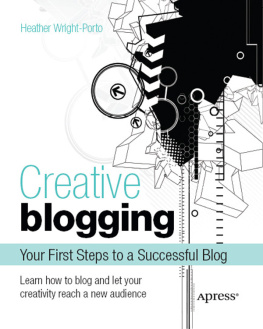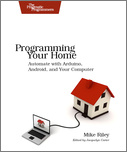Contents
Guide
How to Blog a Book Revised and Expanded Edition
Write, Publish, and Promote Your Work One Post at a Time
Nina Amir
[WD Logo]
WritersDigest.com
Cincinnati, Ohio
HOW TO BLOG A BOOK REVISED AND EXPANDED EDITION. Copyright 2015 by Nina Amir. Manufactured in the United States of America. All rights reserved. No part of this book may be reproduced in any form or by any electronic or mechanical means including information storage and retrieval systems without permission in writing from the publisher, except by a reviewer, who may quote brief passages in a review. Published by Writers Digest Books, an imprint of F+W Media, Inc., 10151 Carver Road, Suite # 200, Blue Ash, OH 45242. (800) 289-0963. Revised edition.
For more resources for writers, visit www.writersdigest.com/books .
19 18 17 16 15 5 4 3 2 1
Distributed in Canada by Fraser Direct
100 Armstrong Avenue
Georgetown, Ontario, Canada L7G 5S4
Tel: (905) 877-4411
Distributed in the U.K. and Europe by F&W Media International
Brunel House, Newton Abbot, Devon, TQ12 4PU, England
Tel: (+44) 1626-323200, Fax: (+44) 1626-323319
E-mail:
Distributed in Australia by Capricorn Link
P.O. Box 704, Windsor, NSW 2756 Australia
Tel: (02) 4577-3555
Dedication
To all aspiring authors and bloggers who would like to become published authors.
And to the late Professor John Keats, who said, If you can write an article, you can write a nonfiction book. A nonfiction book is just a series of articles on the same topic strung together. I strung a series of related blog posts together instead. I hope youre proud, JK.
Acknowledgments
First, Id like to thank Michael Larsen and Elizabeth Pomada for including me as a panelist at the San Francisco Writers Conference. From that opportunity the How to Blog a Book blog was born. Second, my webmaster and blogmaster Linda Lee offered support and counsel. Third, Verna Dreisbach saw the entire me and a path to help me succeed.
Shane Birley, Linda Lee, Bill Belew, Robert Peters, Joel Friedlander, Jeff Herring, and MaAnna Stephenson served as consultants on the chapters containing technical information. Sue Collier and Carla King also lent their expertise to the section on self-publishing. Intellectual property attorneys Robert Pimm and Gary K. Marshall reviewed and added to the section on copyright.
At Writers Digest Books, Id like to thank Phil Sexton, my publisher and colleague; I am forever grateful to him for taking a risk on this book and on me. Thanks also to Rachel Randall, Bethany Rainbolt, and Debbie Thomas for supporting all my editorial and design needs.
Id also like to thank my blog readers, who helped me become a published author, and the continuous flow of readers of the published book who made this second edition possible.
Im extremely grateful to my husband, Rononce upon a time my only blog reader. Every blogger needs a first reader. And each writer needs a supporter, an advocate, and a listening ear. Ron has been all of these and more. Without him, I wouldnt be able to pursue my writing and blogging.
I want to thank my mother for encouraging my creative bent for all these years. Heres a book thats not bubkes, Mom!
Last, but not least, huge heaps of gratitude to Karen Stone, my best friend. If I couldnt have shared this journey with her, it would have been awfully lonely.
Foreword
Since the publication of How to Blog a Book in 2012, both sides of the equation it presentsblogging and book publishinghave changed.
Blogging, frequently seen as a hobby, an obsession, or a duty imposed on you by your company, your publisher, or your social media consultant, has continued to grow. Where bloggers in earlier days were often treated as the illegitimate offspring of real media, the attractions of blogging remain strong, probably because blogging is the most democratic form of self-expression ever invented. And as Nina Amir has shown, its a platform with a multitude of benefits for writers who want to be successful.
Plenty of pundits have predicted the death of blogging, because there were so many millions of people starting blogs it became impossible to catalog or even count them. But blogging continued to morph into new forms, incorporating multimedia, penetrating other social media platforms, and claiming a seat at the table. Its common now to see bloggers sitting on panels on broadcast news, and they are quoted everywhere.
Blogs, in fact, are now the most trusted source of information for many consumers. Even people who profess to not read blogs are probably reading plenty of them; they just dont know it. Theyre likely reading online articles on blog sites that dont even call themselves blogs any more. We now get much of our information from blogs that go by resource centers or information archives or any number of other labels.
On the other end of the equation, book publishing has continued to evolve toward a future of which no one is quite certain. E-books, with their new financial models, present unique opportunities to publishers and authors. And author-controlled independent publishing has proven that it will be an increasingly important route for authors of all kinds to take to publication.
But even though blogs are written by writersand books are, toobloggers had little idea of the great advantages of publishing their own books.
In the indie publishing world, writers know they can establish authority, expand their networks, and monetize the secondary effects of publishing a book.
In the blogging world, bloggers know they can build a community of interest around their topic, network with other, bigger bloggers, and eventually find some way to monetize all this activity.
Are these two groups so different?
Even as How to Blog a Book was being published and Nina Amir was attempting to show writers how powerful a blog could be for their publishing plans, bloggers were just waking up to this thing called the Kindle.
At the time, I wrote on Copyblogger that no group of people is better situated than bloggers RIGHT NOW to take advantage of the historic movement to digital books and the exploding popularity of self-publishing.
Soon, Internet marketing, an activity most bloggers learn about if they survive the first few years online, started to wake up to book publishing, too. Especially the speed and ease of digital publishing.
And slowly, bloggers started using the content they had developed to publish real, honest-to-goodness books, not just PDFs formatted to look good on screen.
Authors, with the help of leaders in the indie publishing fieldmost notably Nina Amirbegan to show authors how to use this wonderful blogging platform to create the books they had always wanted to write.
How to Blog a Book has helped countless authors plan, create, and publish books that might otherwise have remained ideas floating around in their minds.
By explaining the process, Nina put a powerful tool in writers hands. And by repeatedly demonstrating, with her own blogging and publishing success, the effectiveness of the method, she has created a resource that will continue to help authors and bloggers for years to come.
This update to the original 2012 edition reflects many of the changes that have taken place in the intervening years, ensuring that How to Blog a Book is as relevant today as when it was first published.
For writers who have wondered about the role of blogging in their career, for writers who want to write books but dont want to tackle such a long document, for writers who dream of landing a traditional publishing deal, and for writers who understand that in the age of digital publishing every author is a





